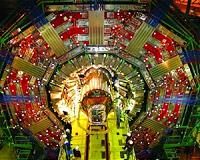 |
Bonn, Germany (SPX) Nov 26, 2010 So far, it has only been possible to image magnetic domains in 2 dimensions. Now, for the first time, Scientists at Helmholtz-Zentrum Berlin have managed to create 3-dimensional images of these domains deep within magnetic materials Every magnetic material is divided into such magnetic domains. Scientists call them "Weiss domains" after physicist Pierre-Ernest Weiss, who predicted their existence theoretically more than a hundred years ago. In 1907, he recognized that the magnetic moments of atoms within a bounded domain are equally aligned. All pursuit of this theory has so far been limited to two-dimensional images and material surfaces. Accordingly, researchers have only ever been able to see a domain in cross section. Together with colleagues from the German Federal Institute for Materials Research and Testing and the Swiss Paul-Scherrer-Institute, Dr. Ingo Manke and his group at the Institute of Applied Material Research at HZB have developed a method by which they can image the full spatial structure of magnetic domains - even deep within materials. To do this, special iron-silicon crystals were produced at the Leibniz Institute for Solid State and Materials Research Dresden, for which the research group of Rudolf Schafer had already developed model representations. Their actual existence has now been proven for the first time. With it, the researchers have solved a decade-old problem in imaging. Their findings will be published in Nature Communications. Most magnetic materials consist of a complex network of magnetic domains. The researchers' newly developed method exploits the areas where the domains meet - the so-called domain walls. Within a domain, all magnetic moments are the same, but the magnetic alignment is different from one domain to another. So, at each domain wall, the direction of the magnetic field changes. The researchers exploit these changes for their radiographic method in which they use not light, but neutrons. Magnetic fields deflect the neutrons slightly from their flight path, just as water diverts light. An object under water cannot be directly perceived because of this phenomenon; the object appears distorted and in a different location. Similarly, the neutrons pass through domain walls along their path through the magnetic material. At these walls, they are diverted into different directions. This diversion, however, is only a very weak effect. It is typically invisible in a neutron radiogram, since it is overshadowed by non-diverted rays. The researchers therefore employ several diffraction gratings in order to separate the diverted rays. During a measurement, they rotate the sample and shoot rays through it from all directions. From the separated rays, they can calculate all domain shapes and generate an image of the domain network in its entirety. Magnetic domains are important for understanding material properties and the natural laws of physics. They also play an important role in everyday life: most notably in storage media such as hard disks, for example, or battery chargers for laptops or electric vehicles. If the domain properties are carefully chosen to minimize electricity loss at the domain walls, the storage medium becomes more efficient.
Share This Article With Planet Earth
Related Links Helmholtz Association of German Research Centres Understanding Time and Space
 Magnetic Trapping Will Help Unlock The Secrets Of Anti-Matter
Magnetic Trapping Will Help Unlock The Secrets Of Anti-MatterLondon, UK (SPX) Nov 24, 2010 A clearer understanding of the Universe, its origins and maybe even its destiny is a significant step closer, thanks to new research. As part of a major international experiment called ALPHA, based at CERN in Switzerland, researchers have helped to achieve trapping and holding atoms of 'anti-hydrogen', which has not previously been possible. The project involves physicists at Swansea Unive ... read more |
|
| The content herein, unless otherwise known to be public domain, are Copyright 1995-2010 - SpaceDaily. AFP and UPI Wire Stories are copyright Agence France-Presse and United Press International. ESA Portal Reports are copyright European Space Agency. All NASA sourced material is public domain. Additional copyrights may apply in whole or part to other bona fide parties. Advertising does not imply endorsement,agreement or approval of any opinions, statements or information provided by SpaceDaily on any Web page published or hosted by SpaceDaily. Privacy Statement |